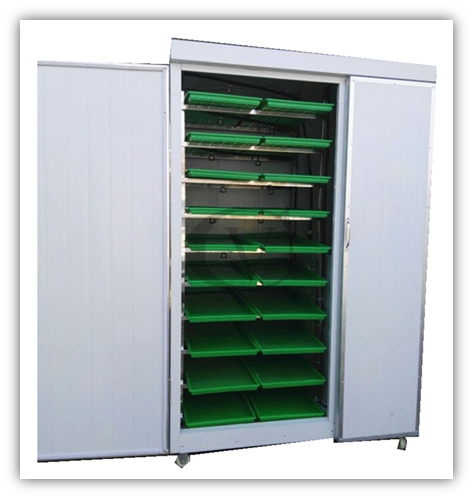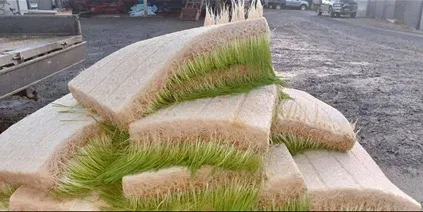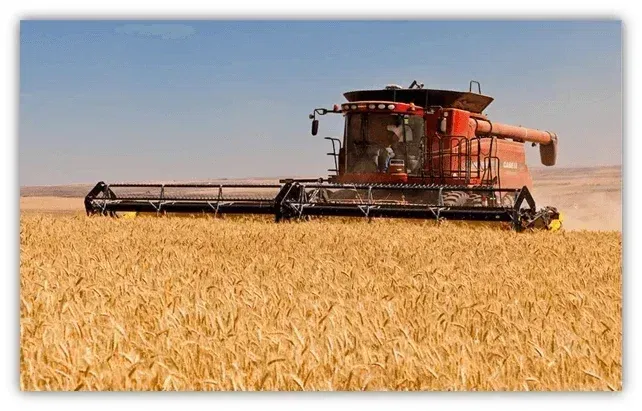CONTAINER Fodder Systems
Fresh Daily 'Green Feed' for Less Than .10/lb.
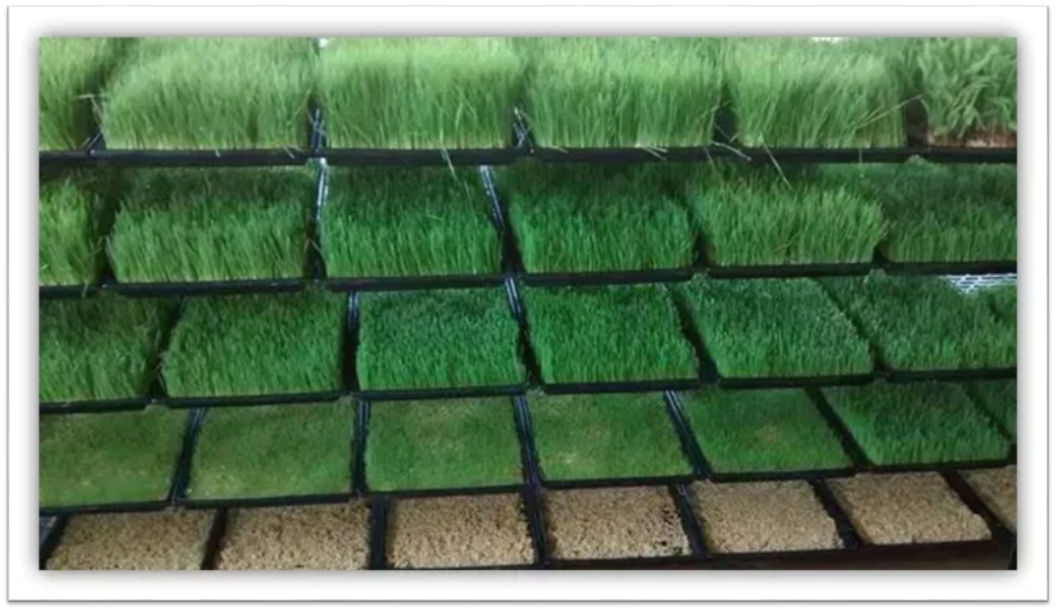
*********************
*Get Financing >> AgLeaseUSA.com*
*********************
HFS-50
50 lbs/day-Size 3.3'x3.5'x7'H-3 trays/day-10 lbs seed+10 gals H2O/day
*Feeds 3-5 Large--10 Small Animals-200 Poultry/Day(3% bwt)
*$3,750 + S&H
____________________________
HFS-100
100 lbs/day-System Size 6'x3'x7'H-Feed 4 trays/day-15 lbs of seed+15 gals H2O/day
*Feeds 5-10 Large/25 Small Animals-400 Poultry/Day(3% bwt)
*$5,600 + S&H 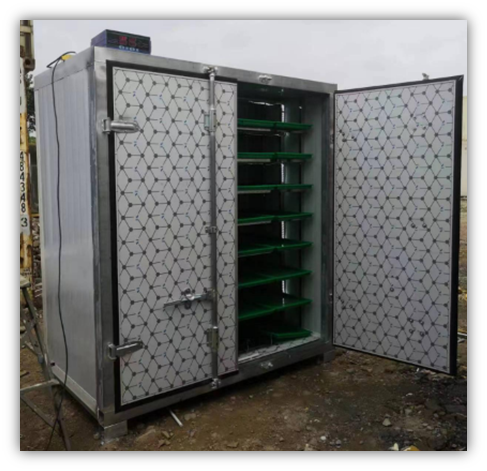 All Trays are 34" x 16" x 1.6" - 5 lbs/Seed/Tray = 35 lbs/Fodder/Tray
All Trays are 34" x 16" x 1.6" - 5 lbs/Seed/Tray = 35 lbs/Fodder/Tray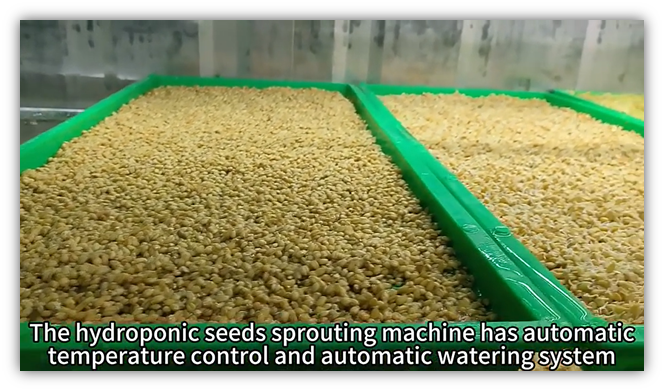 Overhead Misters are Used for Even Growth
Overhead Misters are Used for Even Growth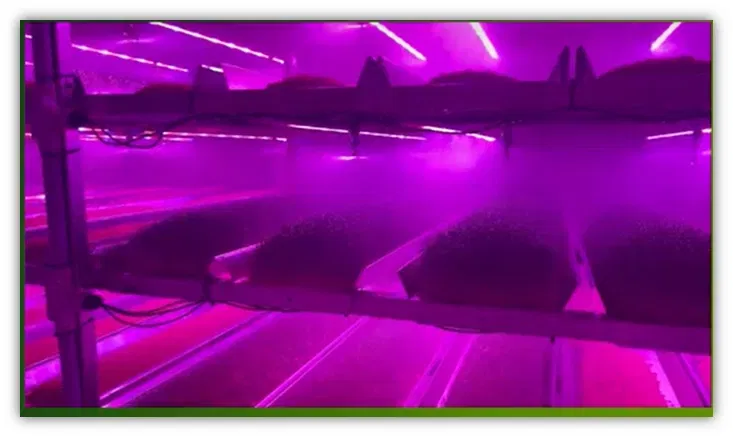
HFS-200
200 lbs/day-System Size 10'x 3'x7'H-8 trays/day-30 lbs seed+18 gals H2O/day
* Feeds 12 Large/40-50 Small Animals-250 Poultry/Day
*$6,750 + S&H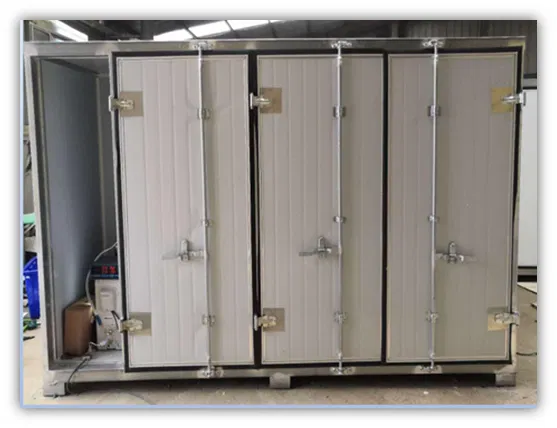 __________________________
__________________________
HFS-500
500 lbs/day-System Size 18'x4'x7'H-20 trays/day-75 lbs seed+50 gals H2O/day
*Feeds 30 Large/100 Small Animals-650+ Poultry/Day
*$15,500 + S&H
(Includes 20' Shipping Container for Grain Storage)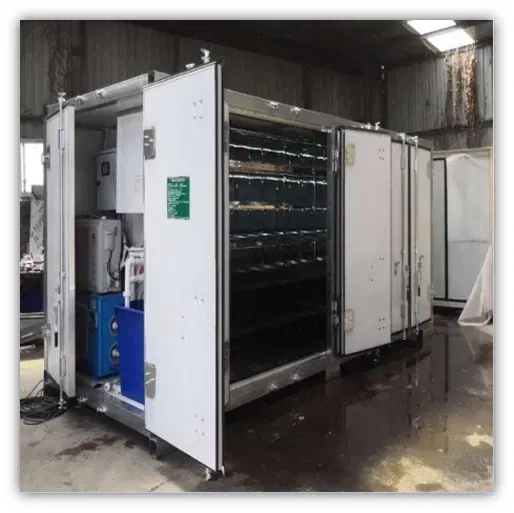
__________________
HFS-1000 (Stainless Steel Trays)
1000 lbs/day-Size 18'x7.5'x7'H-10/90 trays/day-130 lbs seed+50 gals H2O/day
*Feeds 50-60 Large/120 Small Animals/7500 Poultry/day (est.)
*$27,700 + S&H
(Includes 20'Shipping Container for Grain Storage) 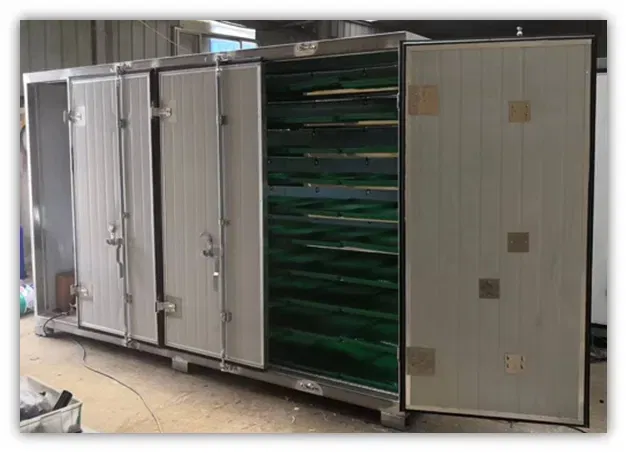 ____________________________________
____________________________________
With 90% digestibility and 16-18% protein, it’s no wonder that fodder grown in a Hydroponic Fodder System produces some of the most nutritious food sources available today for horses, beef, poultry & exotics.
__________________
HFS-2000 (Stainless Steel Trays)
2000 lbs/day-System Size 38'x8'x10'-20/180 trays/day-260 lbs seed+175 gals H2O/day
* Feeds 100-150 Large/500 Small Animals /15,000 Poultry/day
*$34,400 + S&H
(Includes 40' Shipping Container for Grain Storage)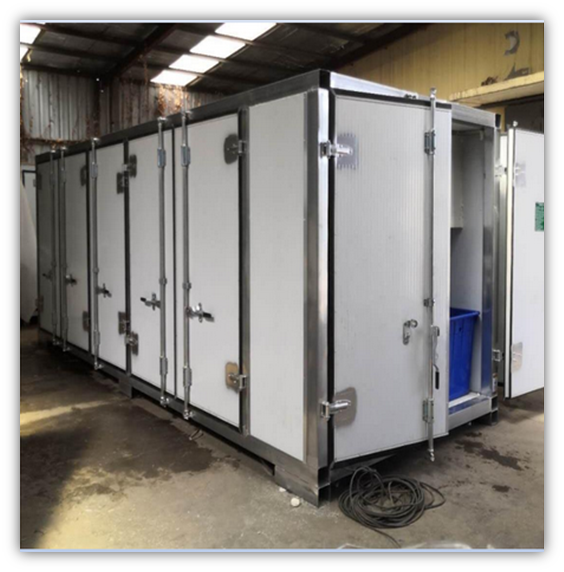
In extreme Hot or Cold climates, it is recommended that systems be placed in insulated buildings or under cover for more efficient operating production. _____________________
***PLEASE NOTE***
For best results it is recommended to use ONLY High Quality Seed of 95% Germination or Higher.
Go to -- BarleyGuy.com
(888)-334-3397 - Call for Info
*PRICES SUBJECT TO CHANGE WITHOUT NOTICE*
__________________
*** DIY Section ***
CropKing.com-Website
FarmTek.com-Website
______________
*** BEST VALUE ***
FodderFeedingSystems.com--Website
This System Produces 180 lbs/day -- Only $575.00 + (S&H)
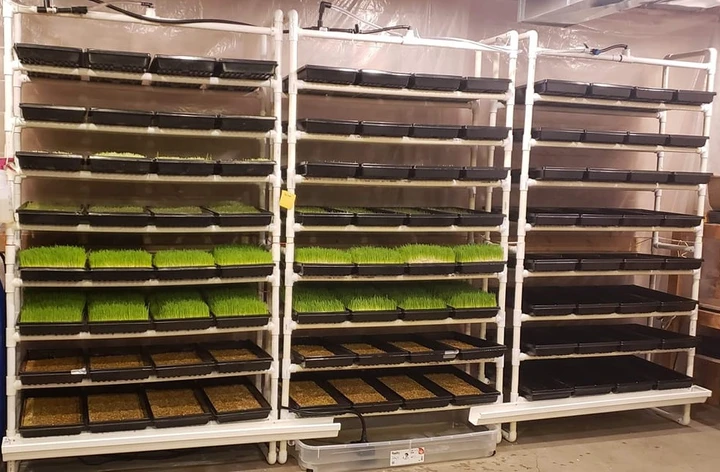
FodderPonics 101 - Q & A
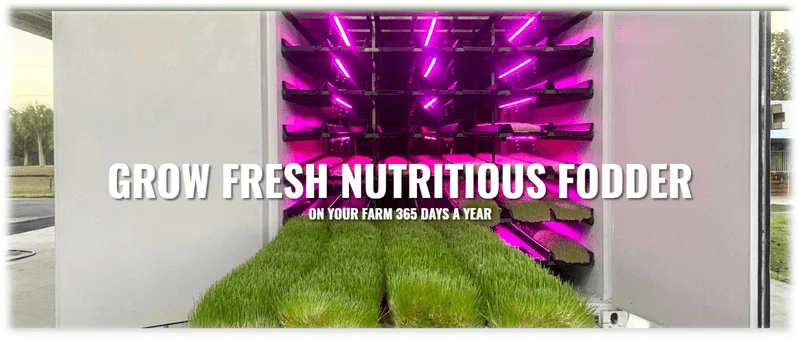
What is FodderPonics?
FodderPonics is the process of irrigating grain seeds & legumes hydroponically to produce highly nutritious mats of Fodder Sprouts.
Fodder is the general term for all types of forages, (excluding pastures for grazing), such as baleage, haylage, silage and grains that are sprouted to form a thick, nutritious feed source for feeding livestock. Sprouted grain fodder has been in existence for thousands of years and is thought to have originated in the Nile River Valley of Egypt and used to feed the herds of nomadic tribes.
What is a Fodder System?
It is a climate controlled environment comprised of a growing room, container or building that is used to sprout micro-greens for humans and cereal grains & legumes for horses, livestock & poultry feed.
How Does a Fodder System Work?
Soaked Seeds (3 hrs.) are spread onto the growing trays and are watered at timed intervals with an overhead sprinkler system. Temperature and humidity levels are maintained inside the system and can be monitored and controlled remotely. With advanced high volume ozone air-exchange technology, airborne mold spores are filtered before propagating on the growing trays. For best results, use only ultra-clean premium high-germ barley to produce quality fodder. One (1) lb. of dry seed will produce 7 lbs.(1:7) of fodder. Every 5 to 7 days, a highly efficient system can produce a daily harvest of 200 to over 2500 lbs. in a container. The automated hydroponic system does all the work and takes about an hour per day to harvest, clean & seed.
Do You Recommend "Soaking" of Seed/Grain?
Yes. For years we used the industry standard of Peroxide for "soaking" seed/grain before seeding to accelerate germination and sanitize seed. We have since discovered a better and less expensive alternative.
The Alternative is ... BioProbiotics! This "Live BioProbiotic" culture solution is Safe for both Human and Animal Consumption!
The BioProbics & water are misted onto the seed bed, which eradicates MOLDS, FUNGUS & TOXINS on the nutritious biscuits. As the BioProbiotics are then absorbed into the Sprouts (during the 5 day growth cycle), the enzymes, amino acids, proteins & BioProbiotics are activated producing 90% digestible sprouts. This nutrient dense explosion is readily available to maximize the digestion of fiber, proteins, vitamins, minerals & oils.
The Best Part is it costs 50% Less than Peroxide and is totally SAFE!
Go To >>Click Here-BioProbiotics for more detailed info.
Can Fodder Replace All Other Feed?
It is recommended that fresh fodder be a supplement and used in conjunction with a balanced feeding program including fiber. In most cases fodder can replace a large portion of existing feed grains & forages being fed and may significantly reduce feed costs by 50% or more.
How Nutritious is Sprouted Grain Fodder?
Sprouted grains are some of the most nutritious feed for all livestock that graze on grass and forages. The sprouting process converts and transforms the grain into a power-packed combination of enzymes, vitamins and enhanced protein. Sprouted grain fodder is 90% digestible and assists in the overall digestion of other fiber for better feed efficiency and reduction of grain consumption. Combinations of sprouted grains can be used to custom blend nutritional requirements for all types of livestock, horses, poultry and exotic species.
What is the Cost/lb to Grow Highly Nutritious Fodder?
Studies indicate that many commercial systems can produce highly nutritious fodder/sprouts for less than $0.10/lb. This includes the cost of grain (barley), labor & utilities. (Results may vary depending on grain quality, environmental controls & producer experience.)
*** Quality Seed is "The Key" to Quality Nutritious Fodder -- (See BarleyGuy.com for Quality Grains) ***
By using only High Quality-High Germination seed of 95% or better, an efficient Fodder System should produce (7-8) Tons Nutritious Fodder for every (1) Ton of Dry Seed.
Is there a Preferred Container Fodder System in America?
Yes. Fodder Systems USA offers the Preferred & Proven Fodder Systems in the U.S. with a worldwide reputation of quality, reliability & service.
Why Should I Consider a High-Efficiency Fodder System?
A high-capacity container or stand alone fodder system can produce exceptional yields and quality while reducing your feed costs by 50% or more. This can provide animals daily with the most nutritious 'live' fresh forage available. Additional benefits include: lessen impact of droughts on forage production - reduce methane emissions (cattle) - control and stabilize feeding costs - reduce the need for additional land production - create a more nutritious protein for human consumption. This ensures that animals live a more humane life while providing for mankind.
How Much Should I Feed My Horses?
It is recommended that horses start on 10 lbs. per day. This can replace some of the existing diet of concentrate, grain supplements or hay. Fodder can be increased to a higher percentage of the horses diet over time depending on age, condition and activity.
What Types of Grain Can Be Sprouted?
After several years of research, barley is preferred to be the best for feeding livestock due to nutritional balance and its explosive germ. There has also been success with other grains such as wheat and legumes resulting in good results by blending various grains.
How Much Should I Feed To Cattle?
The generally accepted standard is 2% to 3% of their body weight per day. Consult your veterinarian and nutritionist to develop custom feeding programs to suit your individual requirements.
Is Fodder/Sprouting Approved by 'American GrassFed Assn'?
Yes, absolutely. The AGA has approved Fodder/Sprouts for Beef & Dairy (up to 20 lbs/day) Pork & all foraging animals for meat and dairy production.
Go To - AmericanGrassfed.org - (pg.15)
What Capacity System Do I Need?
Fodder systems are scalable by expansion of additional containers or more racks in stand-alone systems. Expansion will depend on the number of animals you are feeding and herd size.
How Long Does the Sprouting Process Take?
Most systems take 5 to 7 days from 'seed to feed' at the 'peak' of nutritional value.
What Part Do the Animals Eat?
The animals eat the entire biscuit including the root mat. Nothing is wasted or left behind. 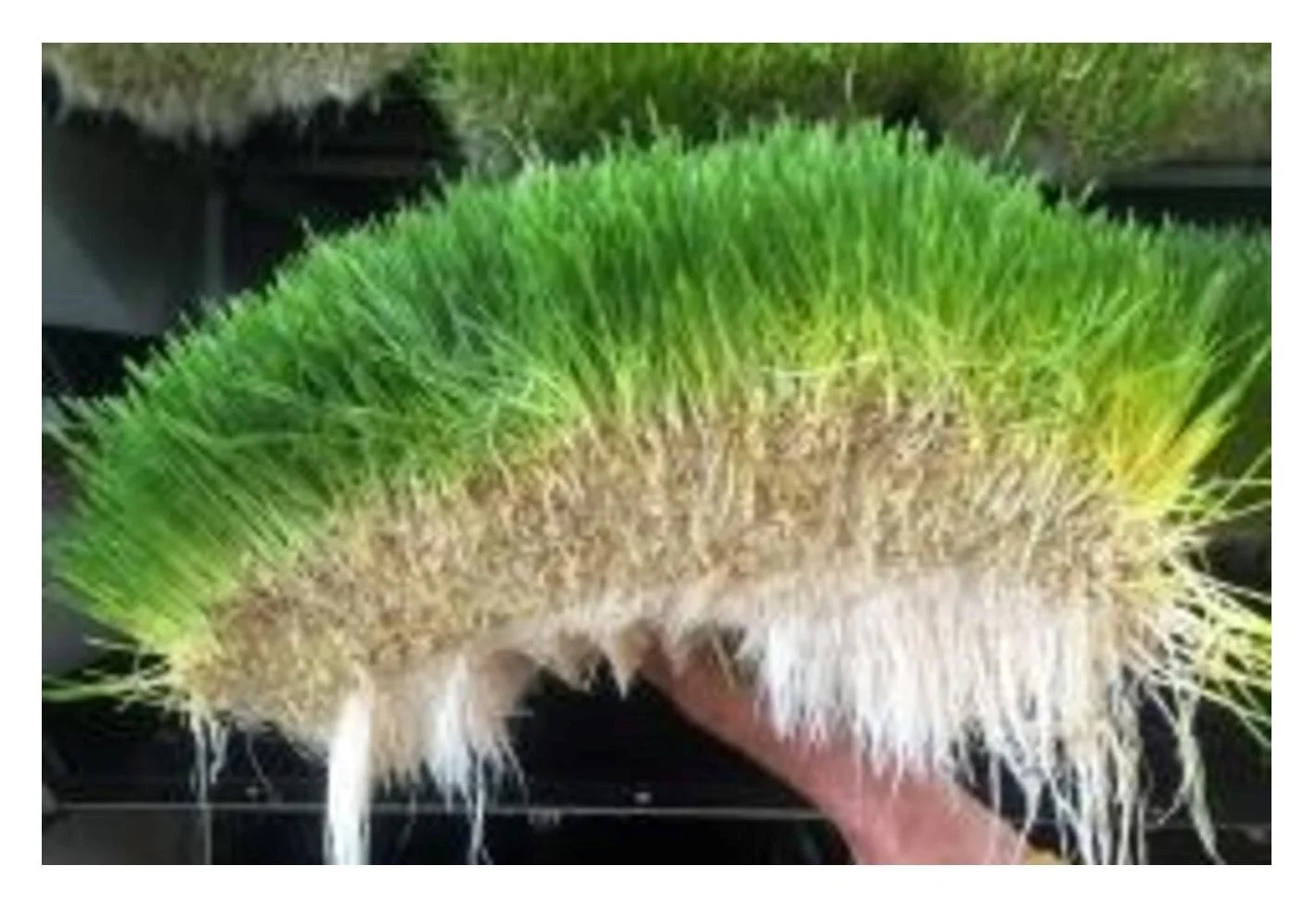 What Water Sources Can I Use?
What Water Sources Can I Use?
Rain water, maintained aerated ponds and well water are suitable to use. Fodder systems can use any type of water provided it is clean and/or filtered. It is recommended to have water sources tested for contamination and mineral content.
What Type of Electrical Service is Needed?
In North America 220v with 50 amps is required. Solar Power can also be adapted to most fodder systems.
How Much is the Cost of Barley Seed for my System?
The price of seed can fluctuate from year-to-year depending on market supply and demand. (Go to 'Grain Quality Standards' page for current pricing.)
How Much is Freight to Deliver My Grain?
Freight cost is determined by distance and weight of shipment from grain source to producer. SGI Logistics has a nationwide network of both independent and terminal carriers to minimize shipping costs. All orders are bid with at least 3 to 5 carriers to negotiate lowest possible shipping rates.
What Animals Can be Fed Fodder?
Beef & dairy cattle, sheep, equine, goats, pigs, rabbits, alpaca, chickens, turkey, ducks, exotics and all other forage eating animals.
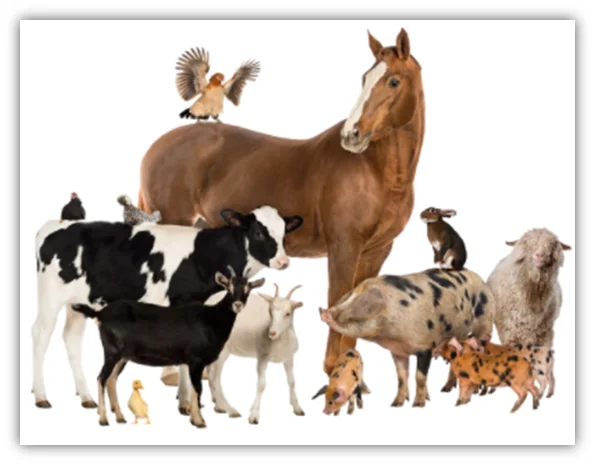
"YOUR SUCCESS IS OUR SUCCESS"
Grain Quality Standards
~SPECIALTY GRAINS INT'L~
- - - - - - - - - - - - -
Sources Premium Quality
Barley~Wheat~Cereal Grains~Forages~Legumes
to Grow Fresh Nutritious Fodder Daily
for Grass-Fed~Beef~Dairy~Exotics Horses~Livestock~Poultry
- - - - - - - -
☆ Non-GMO
☆ 98%+ Purity
☆ Toxins Tested
☆ 95%+ Germ Rate
☆ Heavy Test Weights
☆ Organic Certified USDA
☆ AGA Grass-Fed Approved
☆ Highest Quality in America
☆Ships in Totes~Bags~Bulk
_________
Seed Quality is the LIFEBLOOD
of Fodder/Sprouting
__________
Current Barley Price = $0.22/lb - $430/ton + Shipping
*NOTE -- (1) Ton of Dry Barley Will Produce 7-8 TONS of Nutritious Fodder
Enter ZIPCODE on 'Quote Request Form' to Calculate Shipping Rates
Customer Request Form
- Sourcing Barley & Serving Entire U.S.A.
- SGI Grains & Fodder Systems USA
